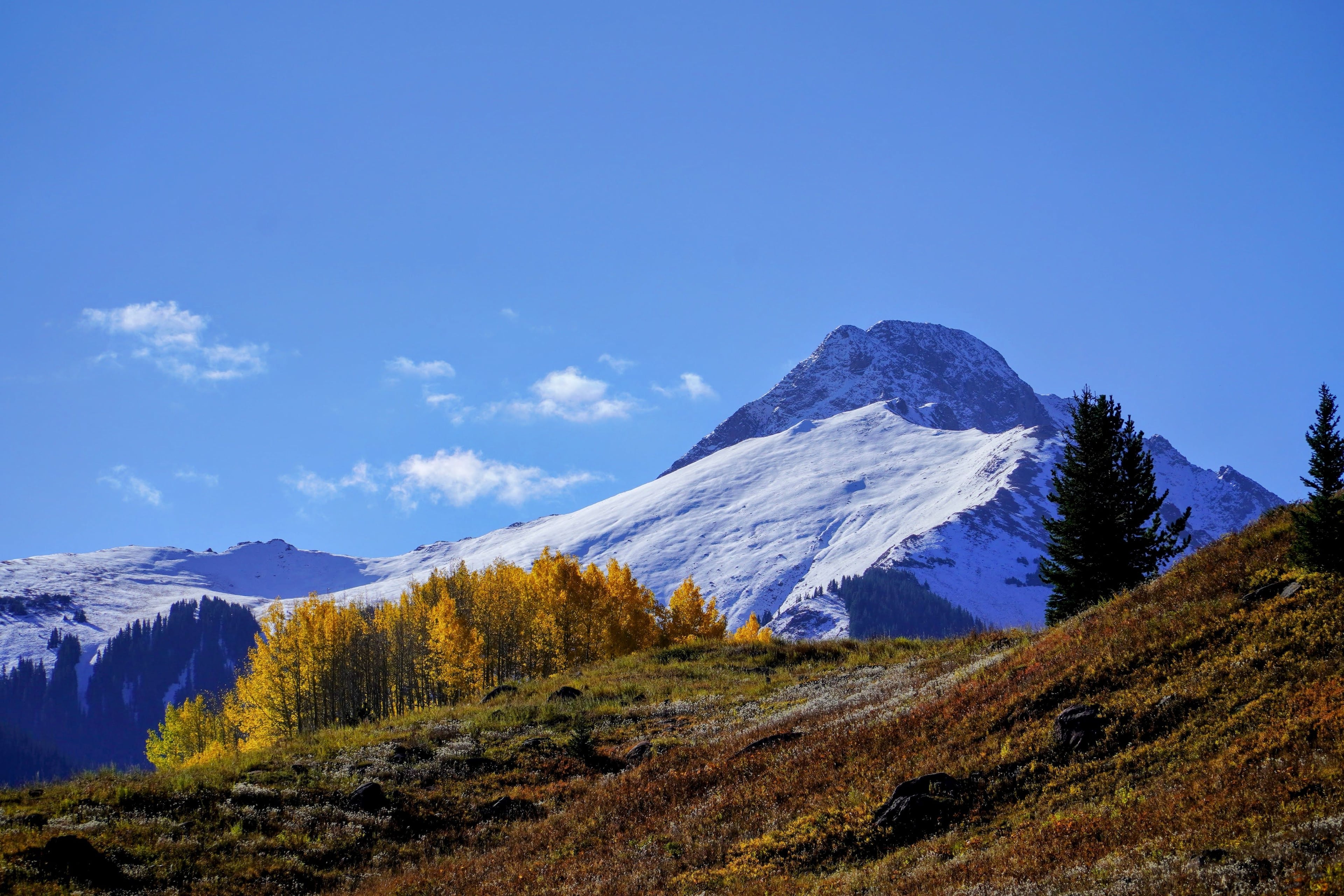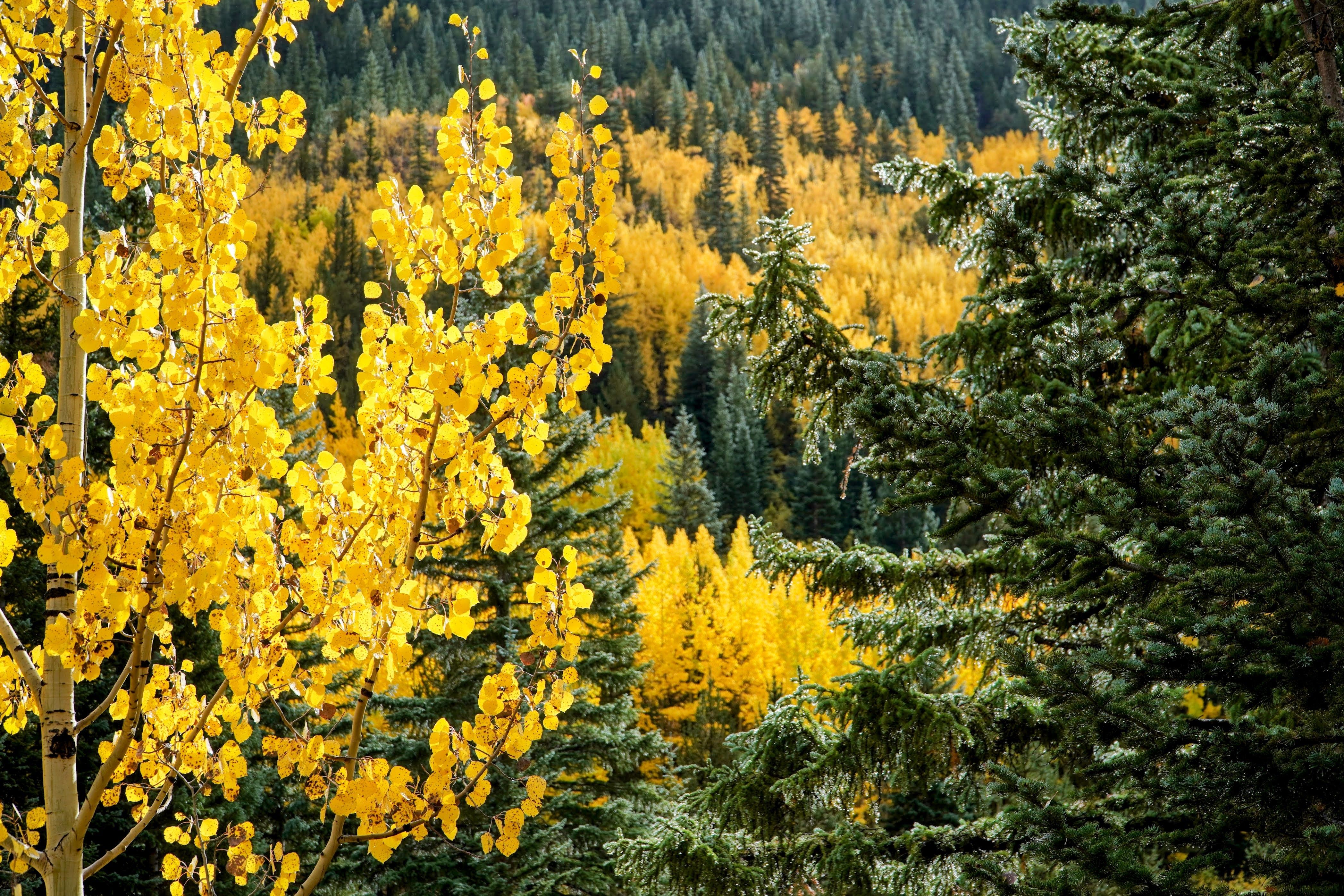Chasing Peak Colors: A Guide to Fall Foliage
A comprehensive guide to timing fall foliage adventures in western mountains using scientific understanding, strategic planning, and tactical flexibility. Learn to predict peak colors across elevation zones, avoid crowds through smart timing, and chase spectacular displays from Colorado's aspens to the Pacific Northwest's larches.
Why Fall Colors Deserve More Than a Sunday Drive
Fall foliage season presents a different kind of outdoor pursuit. Unlike a summit that'll wait for you, autumn colors operate on their own schedule. They advance down mountainsides week by week, respond to weather patterns in predictable ways, and create opportunities that exist for days rather than months. This guide treats color chasing as a legitimate adventure, combining an understanding of the science behind leaf change with the strategic planning and tactical flexibility that makes the difference between spectacular and disappointing experiences.
I've experienced the full spectrum of fall color adventures over the years. I've seen brief seasons cut short by early September snow, and on the other hand, golden aspen leaves creating a stunning contrast against fresh powder.I’ve been perfectly timed for peak colors, and I’ve also arrived weeks late to find bare branches. Even then, I discovered the subtle beauty of alpine landscapes transitioning into winter. I've shivered through cold morning starts and sweated through unexpectedly warm afternoons. It's all been incredible in its own way.
What makes fall foliage different from other outdoor adventures is the timing precision required and the crowds you'll encounter. Unlike a peak that'll be there next weekend, fall colors operate on nature's schedule. Miss the window by a week, and you might find yourself looking at bare trees or brown leaves. But approach it strategically, and you can chase peak colors across elevation zones, experience the remarkable biological processes happening around you, and find solitude even during the busiest season.
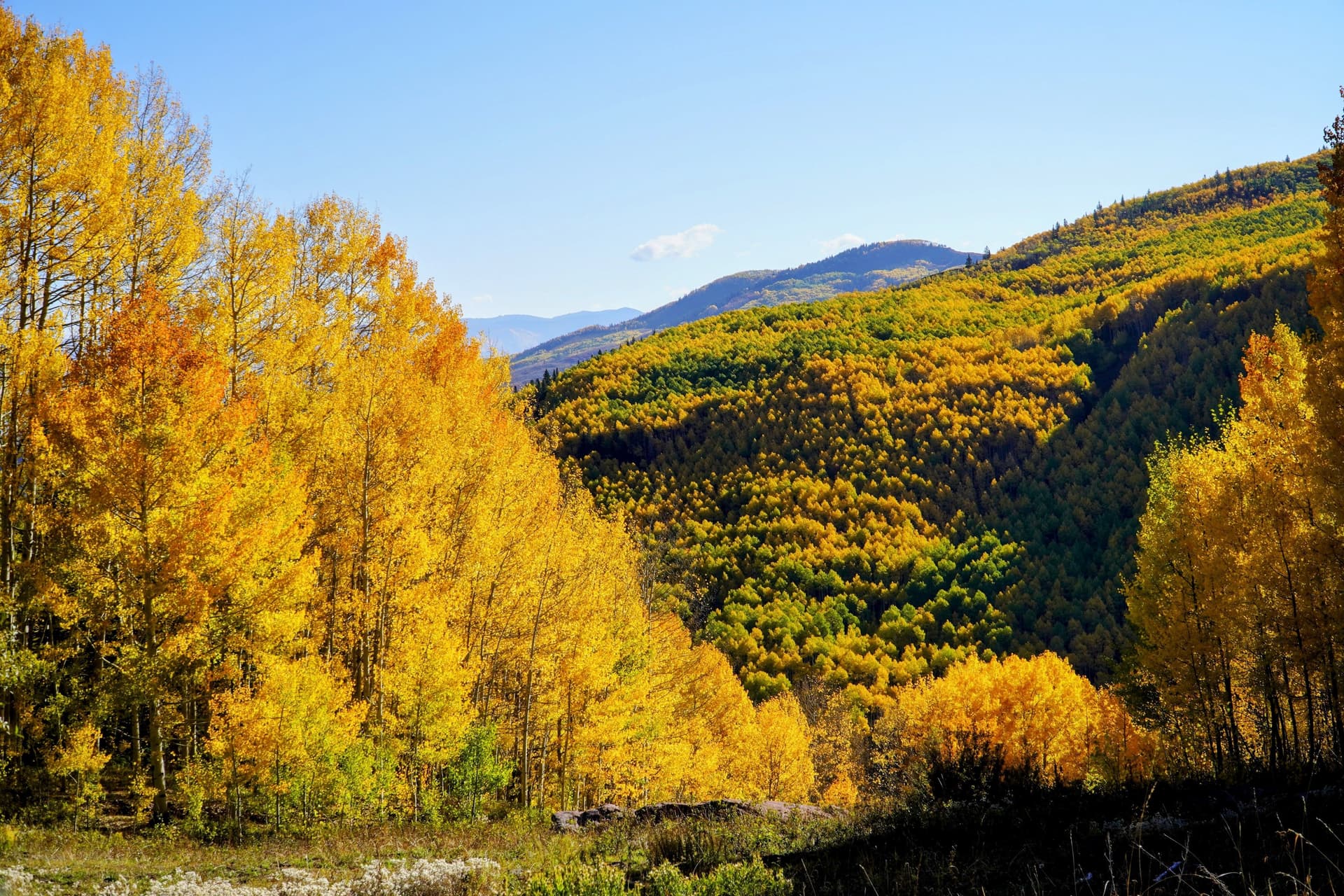
Conservation Reality
Fall color season brings unprecedented numbers of people into fragile mountain ecosystems. Popular aspen groves in Colorado see more visitors in three weeks of peak season than they do during the entire rest of the year. This means every decision we make, from where we park to which trails we choose to how we behave, has amplified impact. Throughout this guide, I'll focus on sustainable approaches that protect these places while still allowing for incredible experiences.
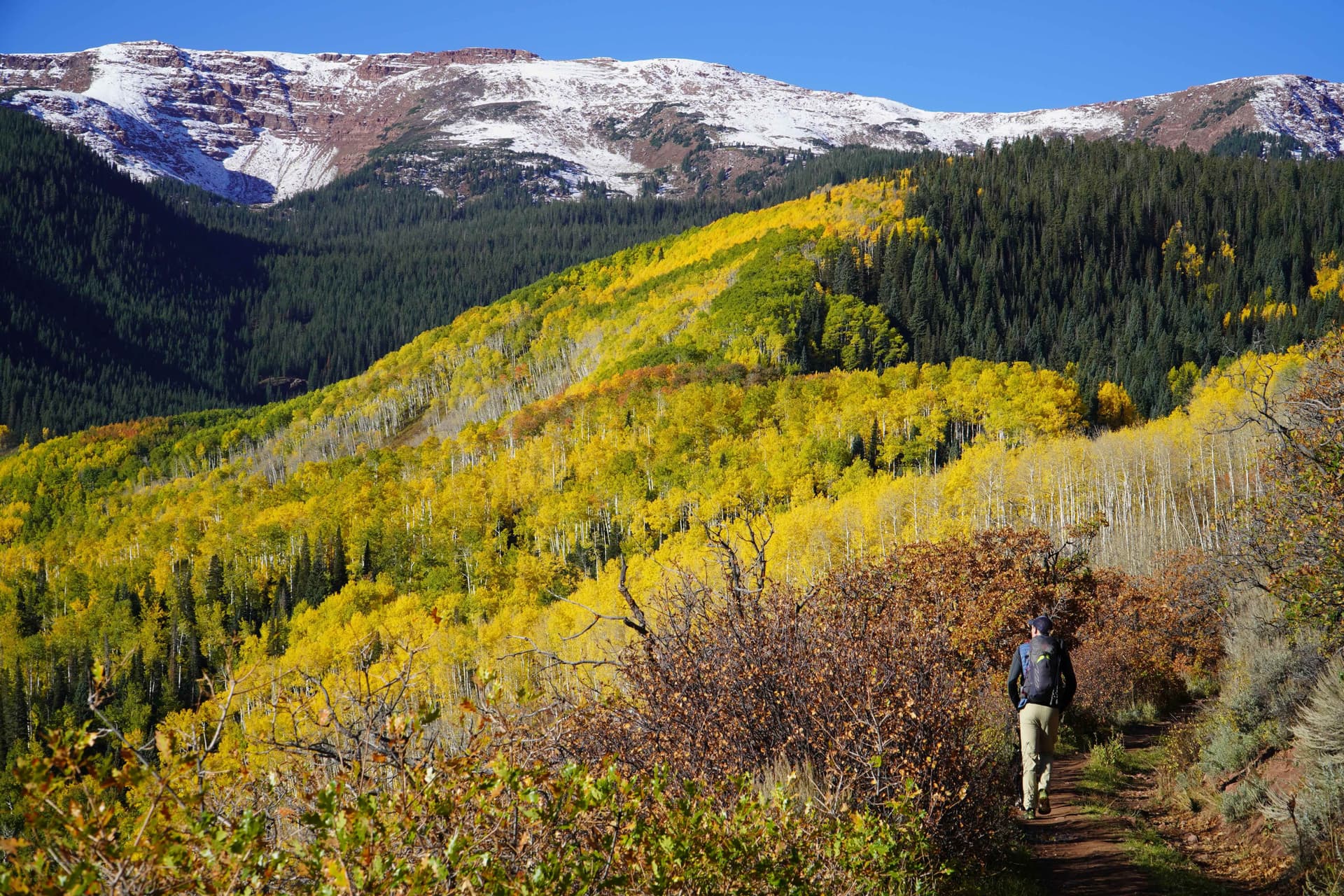
Nature's Color Clock: The Science That Makes Prediction Possible
Understanding why and when leaves change colors transforms you from a passive observer into someone who can predict, plan, and position yourself for the best possible experiences. The science isn't just fascinating. It's practical intelligence that can mean the difference between showing up to brown leaves and witnessing peak brilliance.
Hidden Colors Revealed
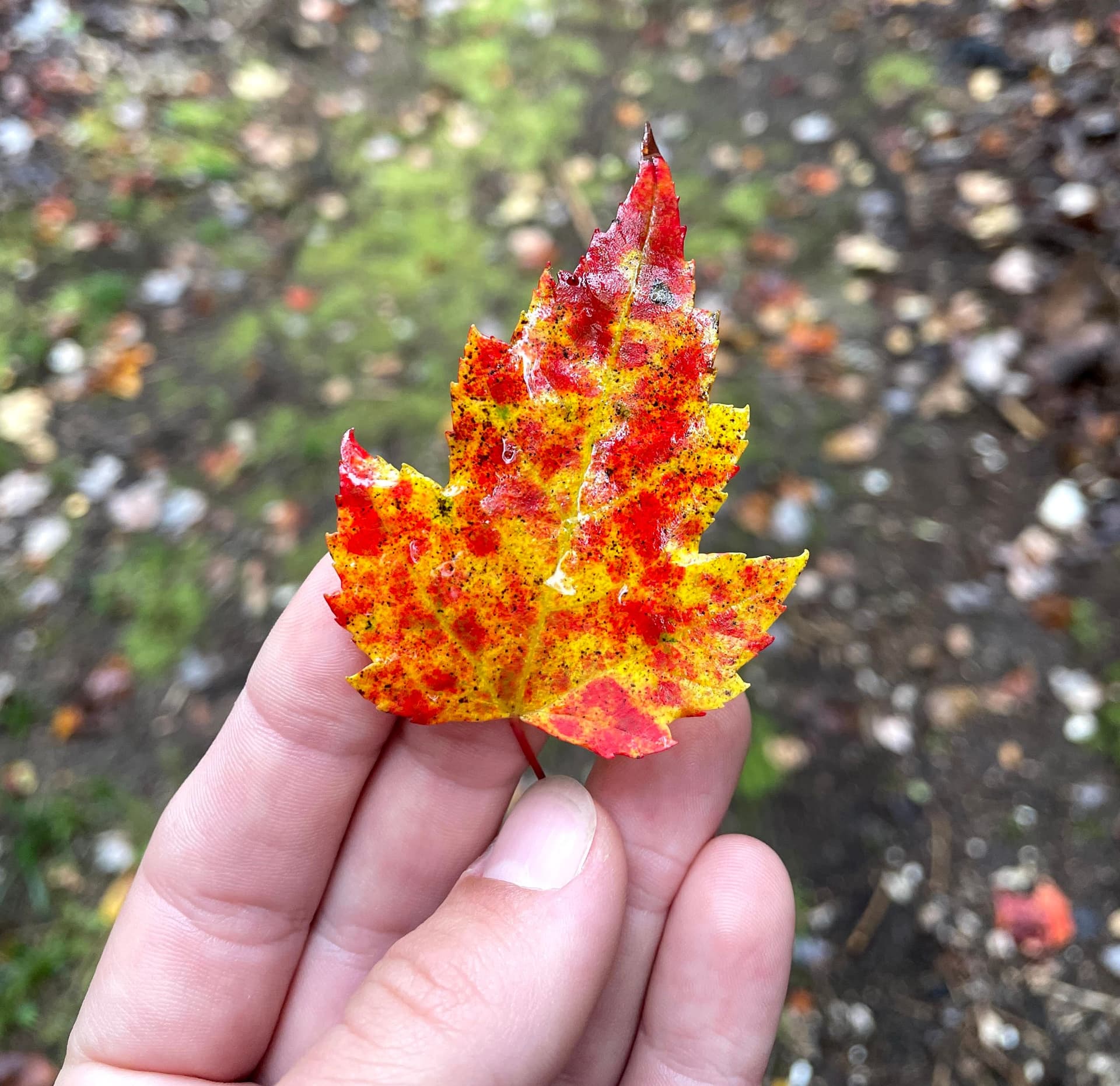
Every green leaf around you right now is hiding a rainbow. Those vibrant yellows, oranges, and reds aren't created in fall, they're unveiled. All summer long, chlorophyll dominates the show, using sunlight to power photosynthesis and masking everything else. But as daylight hours shrink and temperatures drop, trees begin their preparation for winter dormancy.
The process starts 1-2 weeks before you see any color change. Chlorophyll production slows, then stops entirely. As the green pigments break down over 5–7 days, they reveal the carotenoids that were there all along. These compounds are the same ones that make carrots orange and corn yellow. This "unmasking effect" creates the golden aspens that define Colorado's fall season.
But the reds and purples you see in oak bushes and maples? Those are actively manufactured during autumn through an energy-intensive process that consumes 10-15% of a tree's remaining resources. Trees are literally spending their stored energy to create anthocyanins, brilliant red and purple pigments that require specific conditions to develop. Anthocyanins are beautiful to us, but useful to the plants too. In some species, they act as a way to attract pollinators or seed dispersers. And in others, they help act as protection from the new fall environmental stressors.
Why Different Species Change at Different Times
Early-changing species like aspens show high sensitivity to daylight length. When days drop to around 11-12 hours, their internal clocks trigger rapid changes. This "photoperiod sensitivity" explains why aspen groves across a mountainside can turn golden within a matter of days, regardless of elevation differences.
Late-changing species like oaks rely more heavily on temperature accumulation and stress responses. They're playing a different evolutionary strategy by hanging onto their leaves longer to maximize energy production, then creating those deep reds as a final burst before winter shutdown.
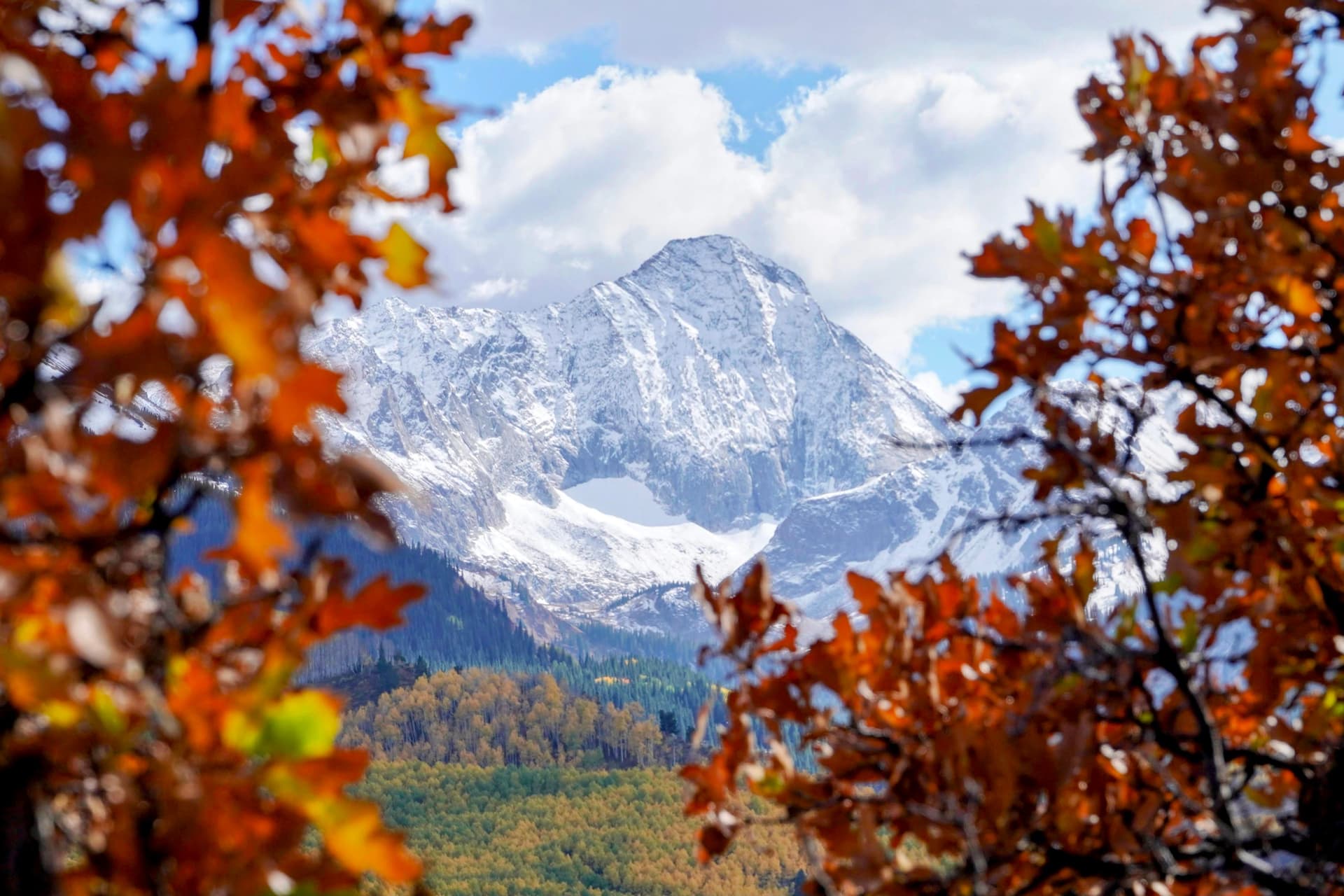
Weather Patterns That Create Magic
The weather conditions from spring through fall determine whether you'll witness spectacular colors or mediocre displays. A wet growing season followed by a dry, sunny autumn sets up the ideal scenario. Trees enter fall with robust energy reserves, then experience the stress conditions that trigger peak pigment production.
The famous "warm days, cool nights" pattern creates the most vibrant displays through simple plant physiology. Warm, sunny days maintain photosynthesis and sugar production in leaves. Cool nights with temperature differentials of 9–12°F between day and night prevent sugar transport out of leaves. This gradual process causes the veins in the leaves to close. This traps the sugars needed for anthocyanin production, literally providing the raw materials for those brilliant reds.
Drought creates complex effects. Moderate water stress can trigger earlier, more intense colors by accelerating the senescence process. But severe drought causes leaves to shrivel and turn brown before developing their full color potential.
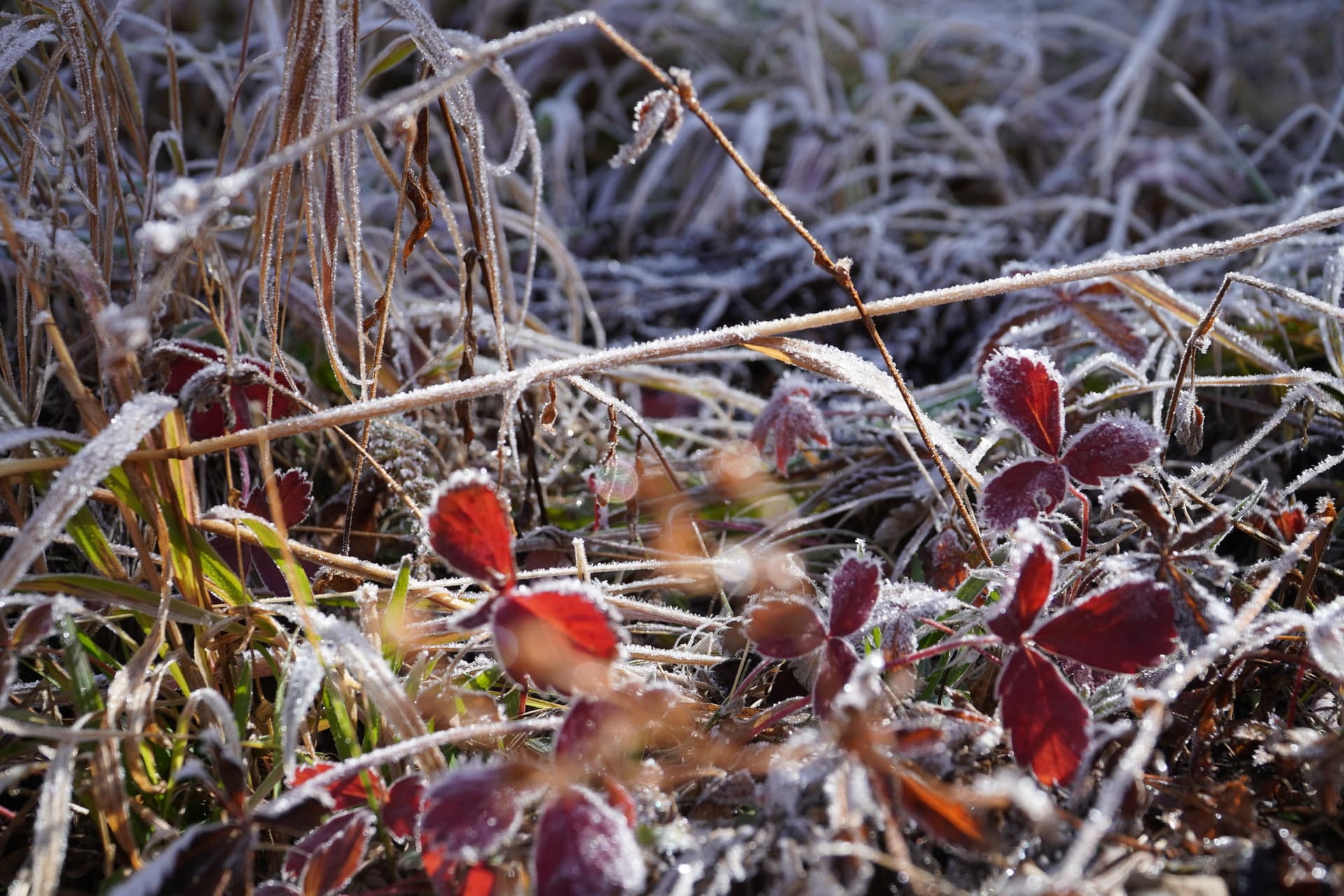
Elevation and Timing
In the mountains, elevation becomes your timing prediction tool. For every 1,000 feet of elevation gain, peak colors occur approximately one week earlier. This rule holds remarkably consistent across western ranges and allows you to plan elevation-hopping strategies.
At higher elevations, trees experience cooler temperatures, shorter growing seasons, and greater environmental stress from wind and UV exposure. These factors combine to trigger earlier preparation for winter dormancy. The temperature gradient, roughly 2–3°F cooler per 1,000 feet, provides the cooling trigger that initiates color change.
But microclimates create fascinating variations within these patterns. North-facing slopes stay cooler and more moist, often developing colors earlier than south-facing slopes at the same elevation. Valley bottoms experience cold air pooling and earlier frost events, while ridgelines face amplified elevation effects from wind exposure.
Timing Strategies
Successful fall foliage adventures require combining scientific understanding with real-time intelligence gathering and strategic timing decisions. The difference between spectacular and disappointing comes down to timing precision that's achievable if you know where to look and how to interpret the data.
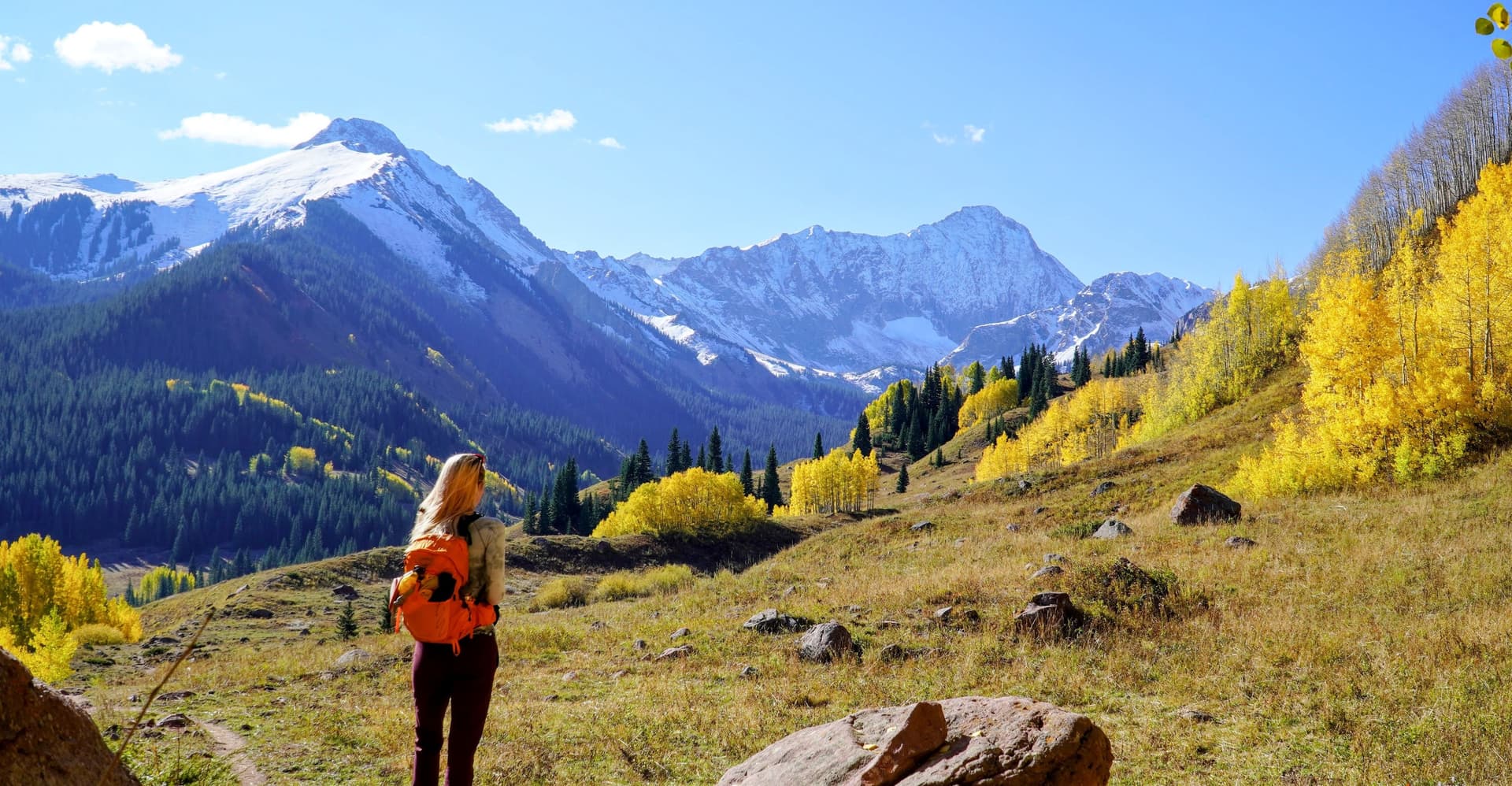
Understanding the Timeline
30 Days Out: Initial Planning Phase Begin monitoring conditions a month before your target dates. Historical data from the previous three years provides baseline expectations for peak timing. Apply for permits as booking windows open. Popular areas like Rocky Mountain National Park implement timed entry during foliage season, and popular trailheads sell out within minutes.
7-10 Days Out: Refinement Phase
This is when precision timing becomes possible. Synthesize multiple information sources to confirm current conditions versus predictions. Weather forecasts become crucial. Start looking for patterns showing warm days (70-80°F) and cool nights (40-50°F) that create ideal color development.
Day-Of: Real-Time Decisions Final weather checks, road condition verification, and overnight reports from early morning visitors provide last-minute intelligence. Be prepared to switch locations based on current conditions.
Professional Forecasting Resources
OpenSnow's Fall Foliage Tracking combines temperature accumulation data, photoperiod calculations, and real-time weather monitoring to provide region-specific timing predictions. During peak season, they update forecasts twice weekly with accuracy typically within one week of actual peak timing.
State forestry departments provide ground-truth reports from field personnel who monitor specific locations weekly. Colorado State Forest Service, Utah Division of Forestry, and similar agencies publish condition reports with specific elevations, aspects, and photos unavailable elsewhere.
NOAA's Climate Prediction Center offers longer-range forecasts that help predict whether colors will be early, late, or typical for the season. Their 8-14 day and monthly outlooks signal approaching weather patterns that might accelerate or delay peak timing.
Reading Weather for Color Prediction
Season-ending weather patterns to watch for:
- Heavy snowfall at high elevations (ends aspen season immediately)
- Extended heat waves in late September/early October (delays color development)
- Strong windstorms (strip leaves before peak color)
- Hard freezes below 25°F (cause leaves to drop without full color development)
Real-Time Intelligence Networks
Social Media Reconnaissance provides current conditions when done strategically. Follow location-specific hashtags like #ColoradoAspen or #UtahFall, focusing on recent posts from serious outdoor photographers who understand color progression. Instagram Stories often provide more current information than main posts. Always check descriptions and dates to verify content isn't from past seasons.
Trail Report Websites like 14ers.com and Mountain Project include user-submitted condition reports mentioning foliage status at specific elevations.
Webcam Networks offer real-time visual confirmation. Many ski resorts maintain summer webcams showing current foliage conditions. Colorado DOT operates webcams along mountain passes revealing high-elevation color status.
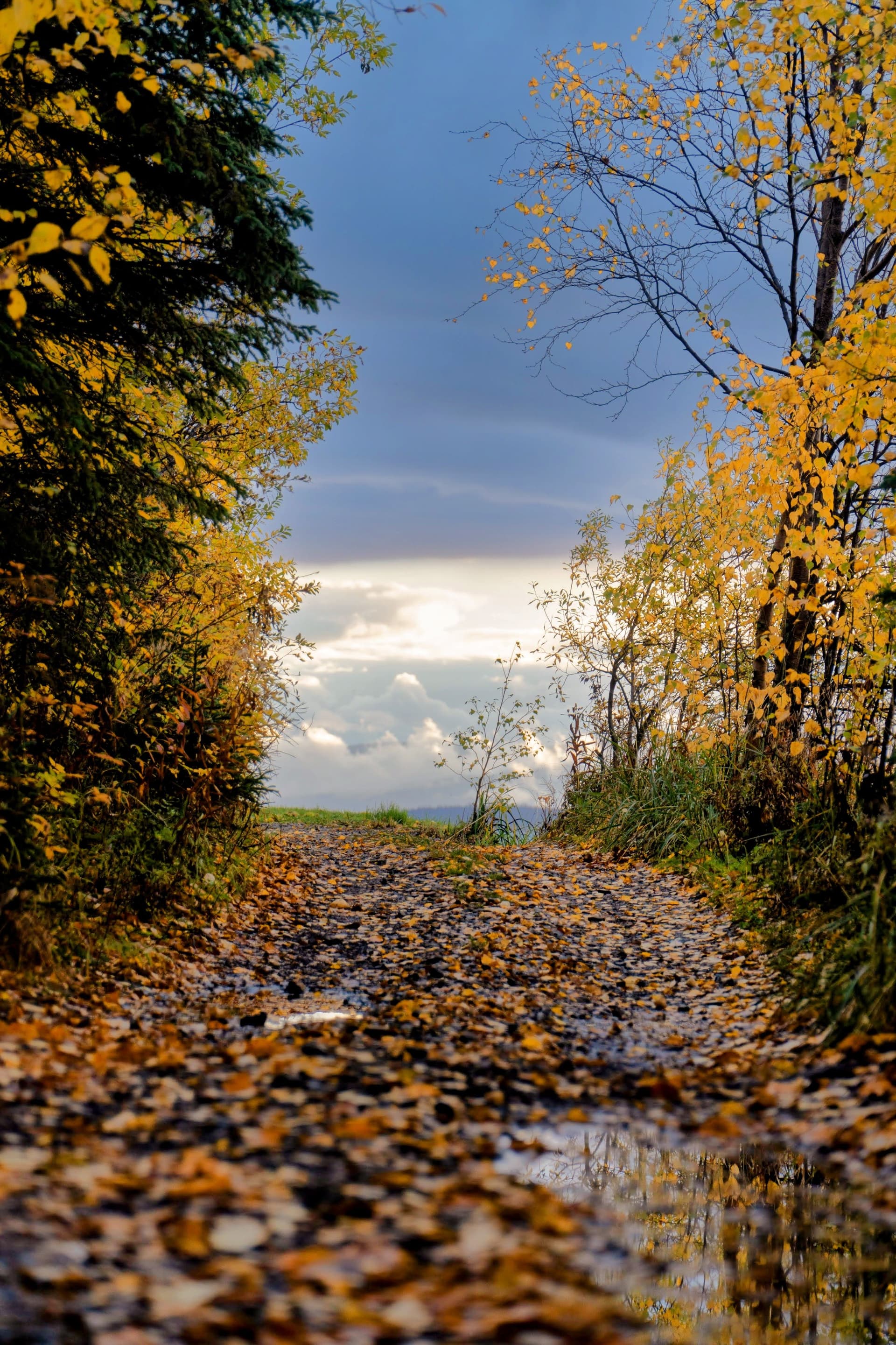
Strategic Timing for Crowd Avoidance
Weekday adventures provide dramatically different experiences than weekend visits during peak season. A Tuesday morning at a popular aspen grove might offer solitude and available parking, while Saturday becomes gridlock with overflow parking extending miles down mountain roads.
Time-of-day planning is crucial during busy periods:
- Early morning starts before 7 AM provide parking availability and peaceful trails
- Late afternoon visits after 3 PM offer excellent lighting while avoiding midday crowds (requires careful planning for shortened daylight)
Shoulder season opportunities exist at both ends of the color spectrum. Early season visits when colors just start and late season adventures when some trees are past peak but others remain vibrant offer reduced crowds while still providing spectacular displays.
Always Have Backup Plans
Never plan a fall foliage trip with only one target location. Weather, timing variations, and crowd conditions can make any single location disappointing. Effective backup planning means identifying 2-3 locations within driving distance offering similar experiences but different elevation ranges, aspects, or access points.
Diversified timing strategies protect against peak timing miscalculations:
- If colors are past peak at your primary location, lower-elevation alternatives keep your trip viable
- If colors haven't started at your target elevation, higher alternatives might already be spectacular
Western Mountain Color
The western United States offers foliage experiences fundamentally different from the hardwood forests that dominate eastern fall color guides. Here, elevation becomes your planning tool, aspen groves create golden amphitheaters, and high alpine plants add subtle but stunning color layers that most visitors miss entirely.
Colorado Rockies: The Aspen Capital
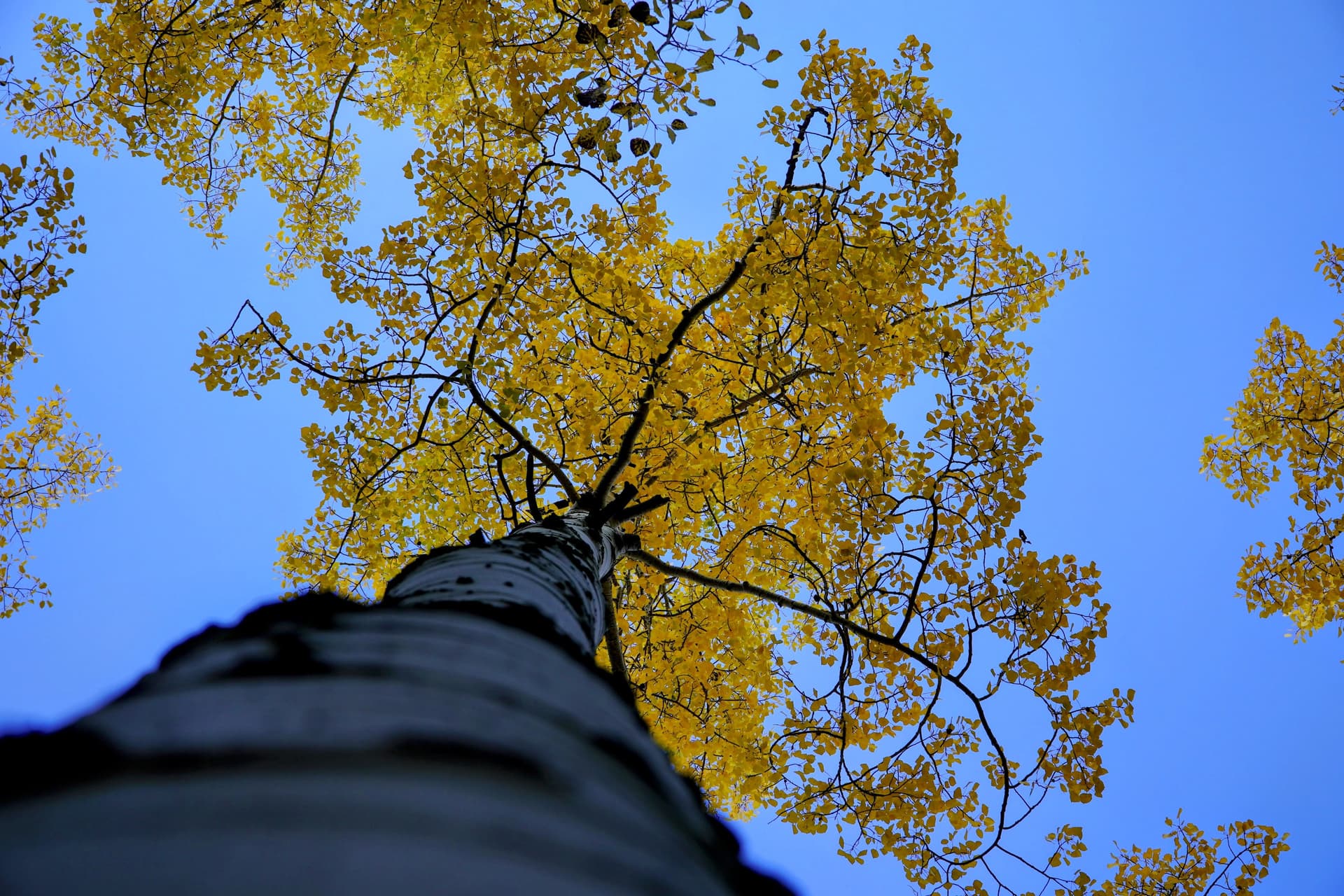
Aspen Groves and Elevation Strategy
Colorado's aspen displays operate on predictable elevation bands that allow you to follow peak colors across multiple weekends. The progression typically flows like this:
- 11,000+ feet: Late August to early September
- 9,000-11,000 feet: Mid to late September
- 7,000-9,000 feet: Late September to early October
- Below 7,000 feet: Early to mid-October
The secret to spectacular aspen experiences lies in understanding that individual groves can vary significantly based on aspect, water availability, and microclimate factors. South-facing slopes typically change 3-5 days earlier than north-facing slopes at the same elevation. Groves near water sources often hold their colors longer and display more vibrant yellows.
Oak Brush and Alpine Plant Timing
What many visitors miss entirely are the other color players in Colorado's high country. Oak brush (Quercus gambelii) grows in dense thickets at 6,000-8,000 feet and produces deep reds and oranges that peak 1-2 weeks after aspen. These displays often coincide with the first high-country snow, creating dramatic contrasts.
Alpine plants add subtle but remarkable color layers above treeline. Mountain ash, alpine willow, and various berry plants create carpets of red, orange, and burgundy that peak in early September at elevations above 10,000 feet. These displays require getting above treeline but offer solitude and unique photographic opportunities.
Hidden Gems of Utah
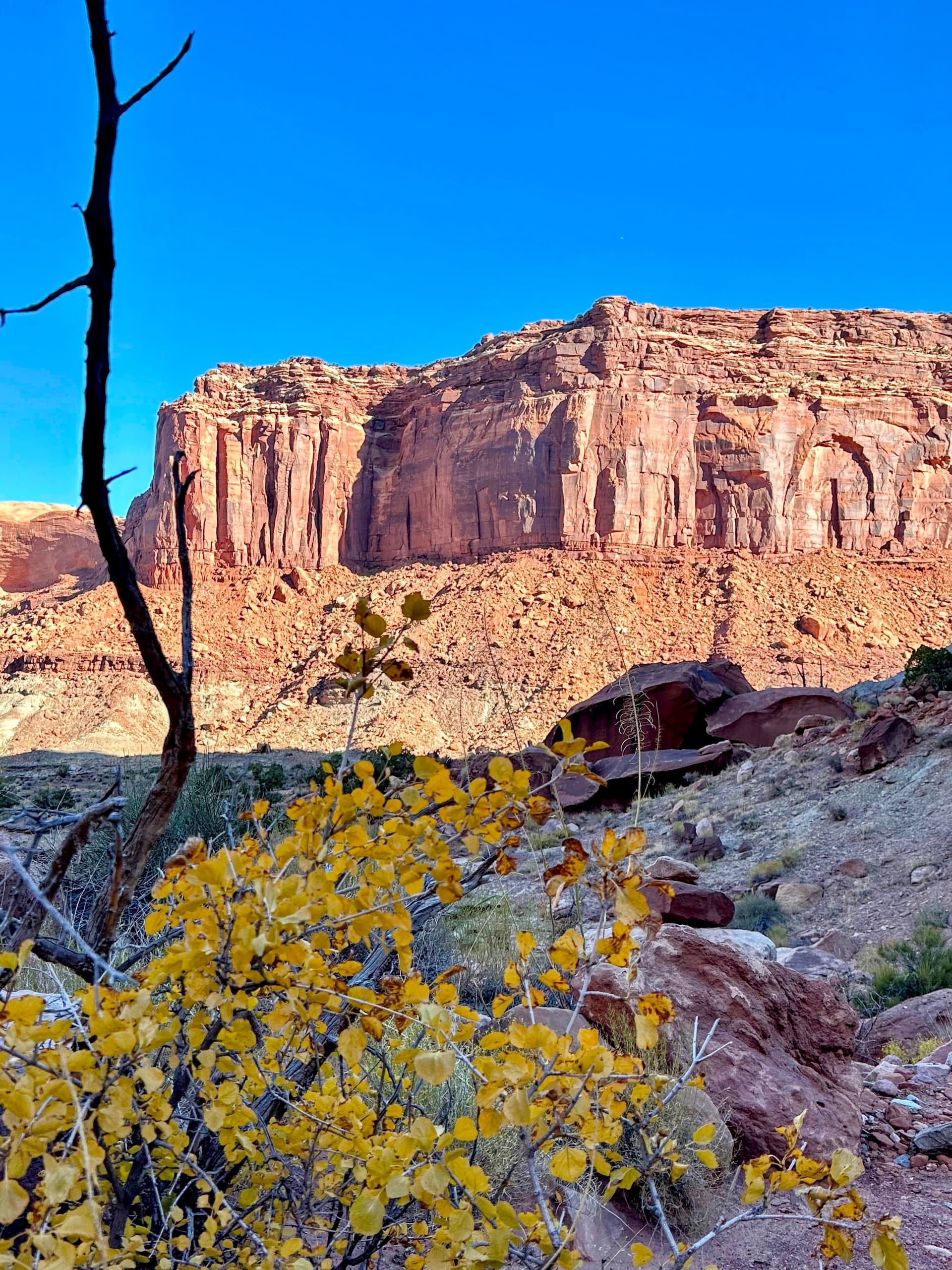
Utah's foliage often gets overlooked in favor of Colorado's more famous displays, but the state offers unique combinations of aspen groves, mountain mahogany, and high-desert plants that create distinctive color palettes.
Wasatch Range timing follows similar elevation rules but tends to run 5-7 days earlier than comparable Colorado elevations. La Sal Mountains near Moab offer the unique experience of aspen groves rising above red rock desert, a color combination you won't find anywhere else.
Different Timing Patterns in desert mountain ranges create extended seasons. Because these ranges rise as isolated islands from desert floors, they experience different weather patterns than continuous mountain ranges. This can result in color windows that stay open longer or peak at unexpected times.
Pacific Northwest and Northern Rockies: Extended Seasons
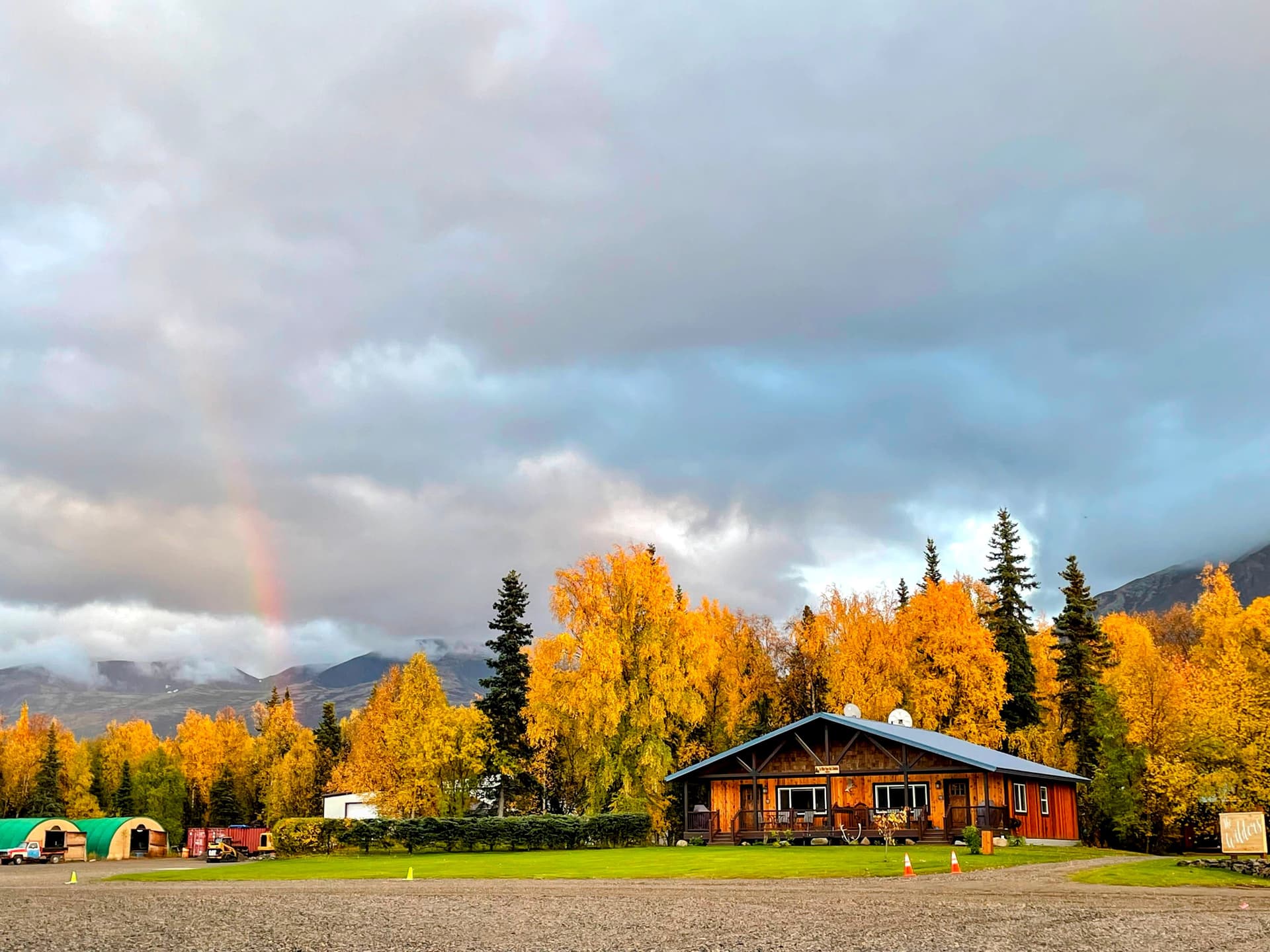
Unique Species like vine maple, western larch, and Pacific Northwest understory plants create color displays that extend well into October and sometimes November. Western larch (alpine larch) provides brilliant golden displays at treeline elevations in late September/early October.
Extended Seasons result from maritime climate influences that moderate temperature swings and extend growing seasons. This creates opportunities for foliage adventures that continue after Colorado's aspens have dropped their leaves.
Trail Selection
Beyond Scenic Drives
The most spectacular foliage experiences require getting away from roads and scenic drives. Popular driving routes like Colorado's Highway 82 through Aspen or Utah's Alpine Loop provide convenient access but also maximum crowds and limited perspectives.
Superior hiking experiences offer multiple advantages: dynamic viewing angles as you move through different elevation zones, opportunities to position yourself within groves rather than viewing from a distance, and access to combinations of species that create more complex color displays.
Strategic trailhead selection during peak season means choosing less obvious access points. Instead of the main Castle Creek trailhead near Aspen, consider approaches from Taylor Pass or American Basin. These alternatives often provide better color displays with significantly fewer people.
Planning Logistics
Fall foliage adventures require more logistical planning than typical hiking trips. The compressed timing, increased crowds, and unpredictable weather create challenges that can derail poorly planned trips.
Permits and Reservations
Popular areas requiring advance reservations during foliage season include many locations that operate first-come, first-served the rest of the year. Rocky Mountain National Park implements timed entry permits from late September through mid-October. Many Colorado 14er trailheads providing aspen access require parking reservations during peak color weekends.
Reservation strategies:
- Apply for permits as soon as they become available (often 30 days in advance)
- Have multiple backup options, popular dates sell out within minutes
- Consider weekday permits over weekend permits for better availability
Lesser-known areas with better availability often provide comparable or superior experiences. Instead of fighting for Maroon Bells permits, consider American Basin, Ohio Pass, or Kebler Pass areas offering spectacular aspen displays without reservation requirements.
Parking Strategy: Conservation and Safety
Never park illegally during foliage season. The temptation becomes overwhelming when encountering unexpected displays, but illegal parking creates serious problems:
- Emergency access blockage preventing fire, medical, or rescue responses
- Environmental damage from creating informal parking areas
- Safety hazards on narrow mountain roads
- Community relations damage leading to access restrictions
Strategic parking planning means researching official capacity and arrival timing ensuring legal parking availability. Popular areas often reach capacity by 7-8 AM during peak weekends.
Building Flexibility Into Your Plans
Adaptable itineraries acknowledge that fall weather and color timing operate on nature's schedule. Effective flexibility strategies include:
- Multi-day trip windows allowing timing adjustments
- Geographic flexibility to chase optimal conditions
- Activity alternatives providing fulfilling experiences when colors aren't perfect
- Weather contingency plans for early snow, rain, or wind events
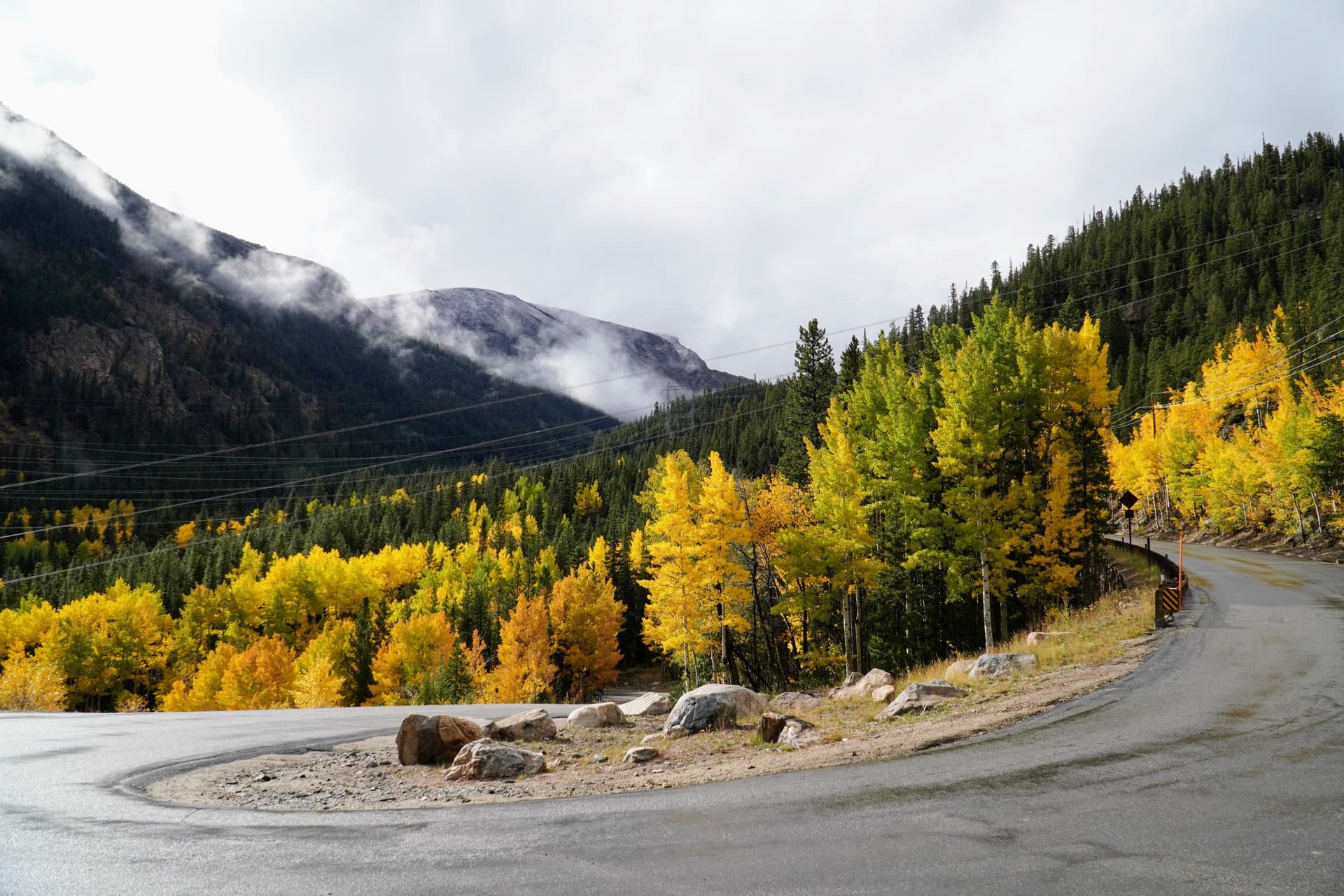
Alternative Access and Route Selection
Beyond Scenic Drives: The most spectacular foliage experiences require getting away from roads. Popular driving routes provide convenient access but maximum crowds and limited perspectives.
Strategic trailhead selection means choosing less obvious access points. Secondary trailheads, longer approaches, or less obvious routes frequently offer better color displays with significantly fewer people. Research multiple routes to the same general area for better options.
Trail Etiquette and Conservation During Peak Season
Fall foliage season transforms quiet mountain trails into bustling destinations. Protecting fragile ecosystems during peak visitation requires thoughtful behavior from every visitor.
Photography and Trail Courtesy
Respect shared spaces when photographing popular spots. Limit time at prime positions to allow others opportunities. Avoid blocking trails while setting up shots. And remember that large groups can create bottlenecks, affecting everyone's experience.
Leave No Trace Principles
Stay on established trails even when tempted to step off for better angles or to avoid crowds. Heavy foot traffic during peak season creates lasting damage to vegetation and soil. Trails are designed to create adequate access to spectacular views without venturing onto fragile vegetation.
Pack out all waste including organic materials like fruit peels that attract wildlife and alter ecosystems. Popular foliage areas see significant litter increases during peak season. Carry trash bags and pick up any litter you encounter.
Wildlife and Ecosystem Protection
Respect wildlife during their critical fall preparation period. Maintain appropriate distances, never feed animals, and minimize noise disrupting natural behaviors. Increased human activity during foliage season stresses wildlife when they're focused on building energy reserves for winter.
Help less experienced visitors who may be unprepared for mountain conditions or unfamiliar with outdoor ethics. Share knowledge about weather changes, appropriate behavior, or Leave No Trace principles. Be patient with crowds and maintain a welcoming attitude that encourages responsible outdoor recreation.
Building Expertise Over Time
Successful fall foliage adventures become easier with experience. Each season teaches you new patterns, refines your timing predictions, and builds location-specific knowledge.
Learning From Each Season
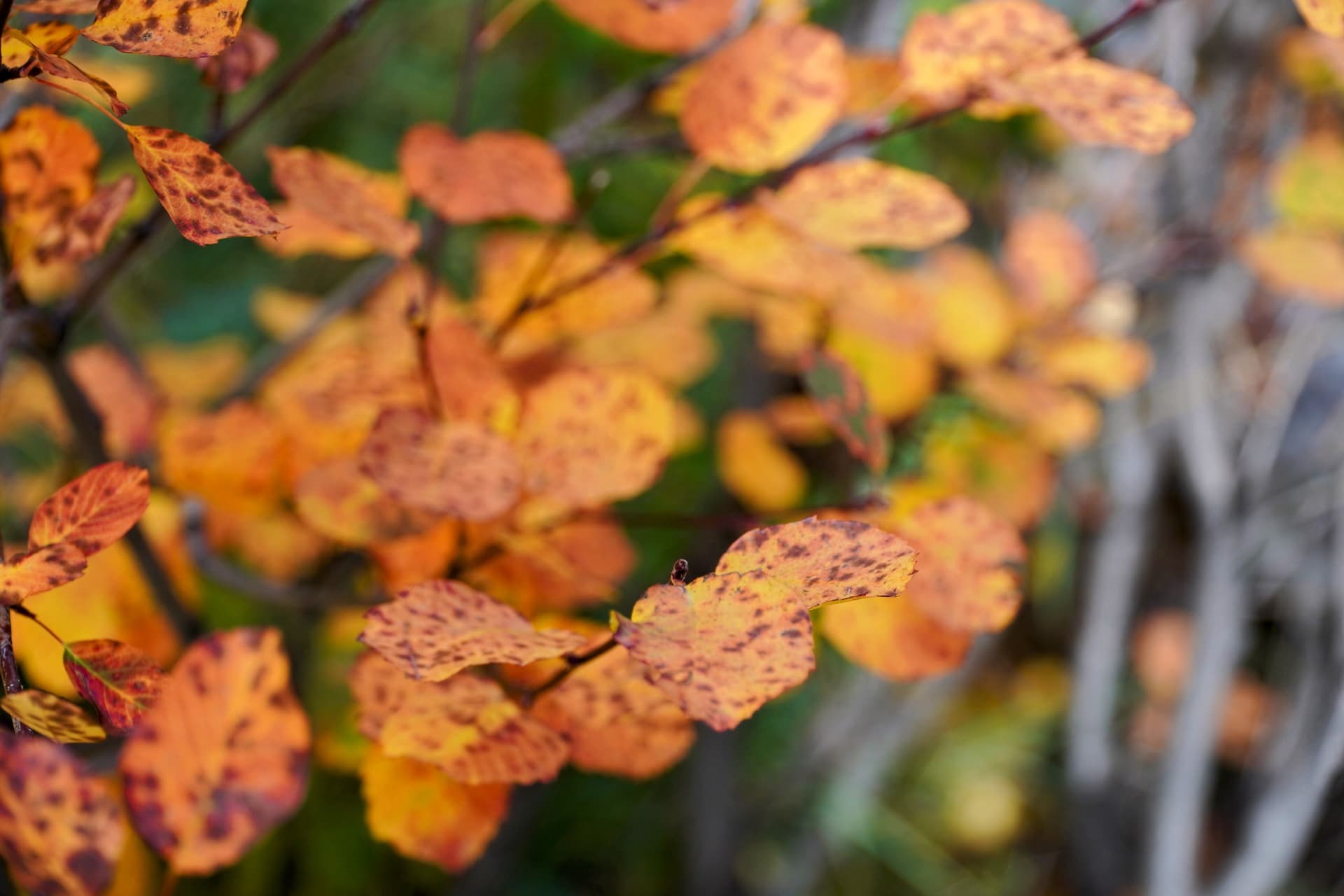
Document your experiences to build personal knowledge. Note actual peak timing, weather conditions, access information, and crowd patterns for different areas. This database becomes invaluable for predicting optimal timing in subsequent years.
Connect with communities through local hiking groups, photography networks, and ranger stations. These relationships provide insights about timing, access conditions, and crowd patterns unavailable through general resources.
Fall foliage season represents one of the most dynamic and rewarding times for mountain adventures. The biological processes creating those brilliant displays connect us to natural cycles that have repeated for millennia. By approaching color chasing with strategic planning and outdoor skills, you transform casual sightseeing into genuine adventure.
The compressed timing windows, unpredictable weather, and increased crowds create challenges that demand respect and preparation. But these same factors also create opportunities for experiences you'll remember for years. There's something profound about standing in a golden aspen grove on a crisp September morning, understanding the biological processes happening around you, knowing you've timed it perfectly through careful planning and research. As you develop your foliage timing skills over multiple seasons, you'll build deeper connections to specific places, understand the subtle variations that elevation and aspect create, and develop a network of fellow enthusiasts who share your appreciation for autumn's remarkable transformation.
The mountains will be there next year, the aspens will turn golden again, and the cycle will continue. Your growing expertise ensures you'll be positioned to witness these displays at their absolute peak, creating adventures that combine outdoor skills, scientific understanding, and deep appreciation for one of nature's most spectacular annual events.
Found this guide helpful?
Ready to put this guide into action? Check out my gear recommendations and real trip reports for additional insights from the field.
